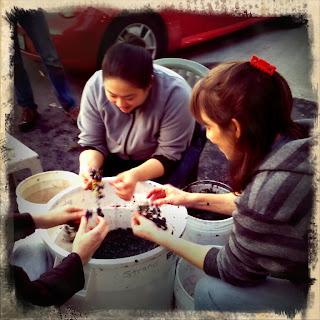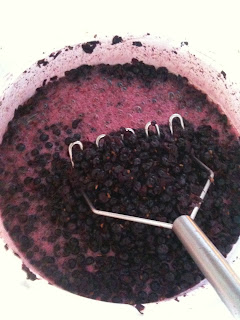We've never had to deal with molds and rots on our grapes, so we started by picking all the grapes, then hand-sorting while destemming into 3 buckets:
1. Sour grapes - any grape that oozed anything but clear liquid appeared to be rotten. Don't want any of that in any of our wines. Pretty sure it's officially called Sour Bunch Rot
2. Botrytis-infected grapes - these for us were grapes with a brown sugar looking mold on them. This is the 'noble rot' used to make famous fancy dessert wines like Sauternes. I highly doubt we'll be able to make a similar quality wine out of not-too-sweet botrytis-ey grapes, but we'll experiment and share with caution
3. Perfect grapes, which we'll use to make our second batch of estate red wine
In the end, we had OK numbers - the pH really shot up more so than other numbers, but we're well within reasonable red wine grape numbers.
Brix: 22.0
pH 3.44
TA: 8.4
To that we added sugar to get our Brix closer to 23-24, a bit (35ppm) of Potassium Metabisulfate to kill any rogue yeasts, and yeast nutrient (1t straight DAP, 1 t Fermaid K per fermenter) before soaking overnight. Tomorrow we'll re-measure and pitch yeasts.






